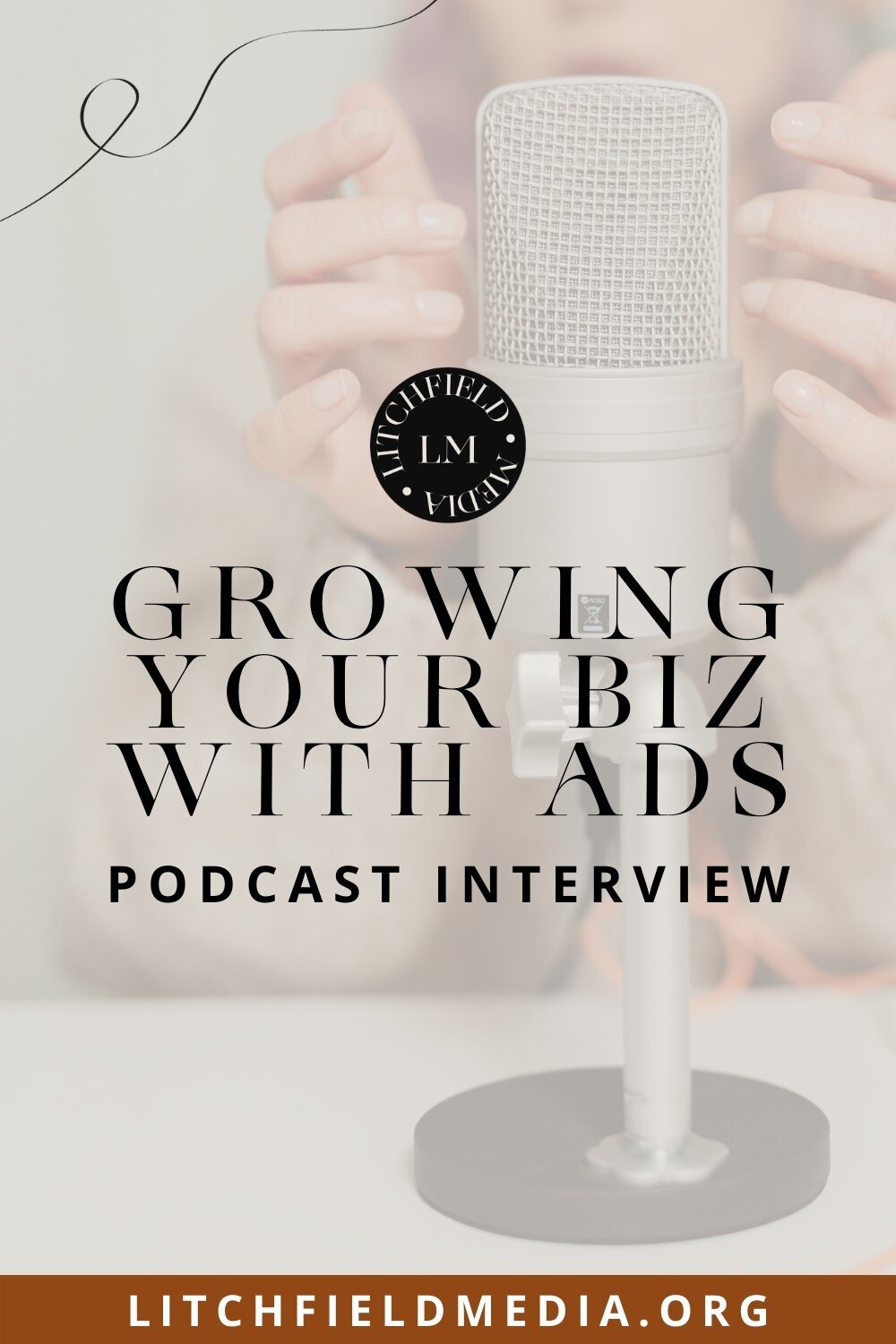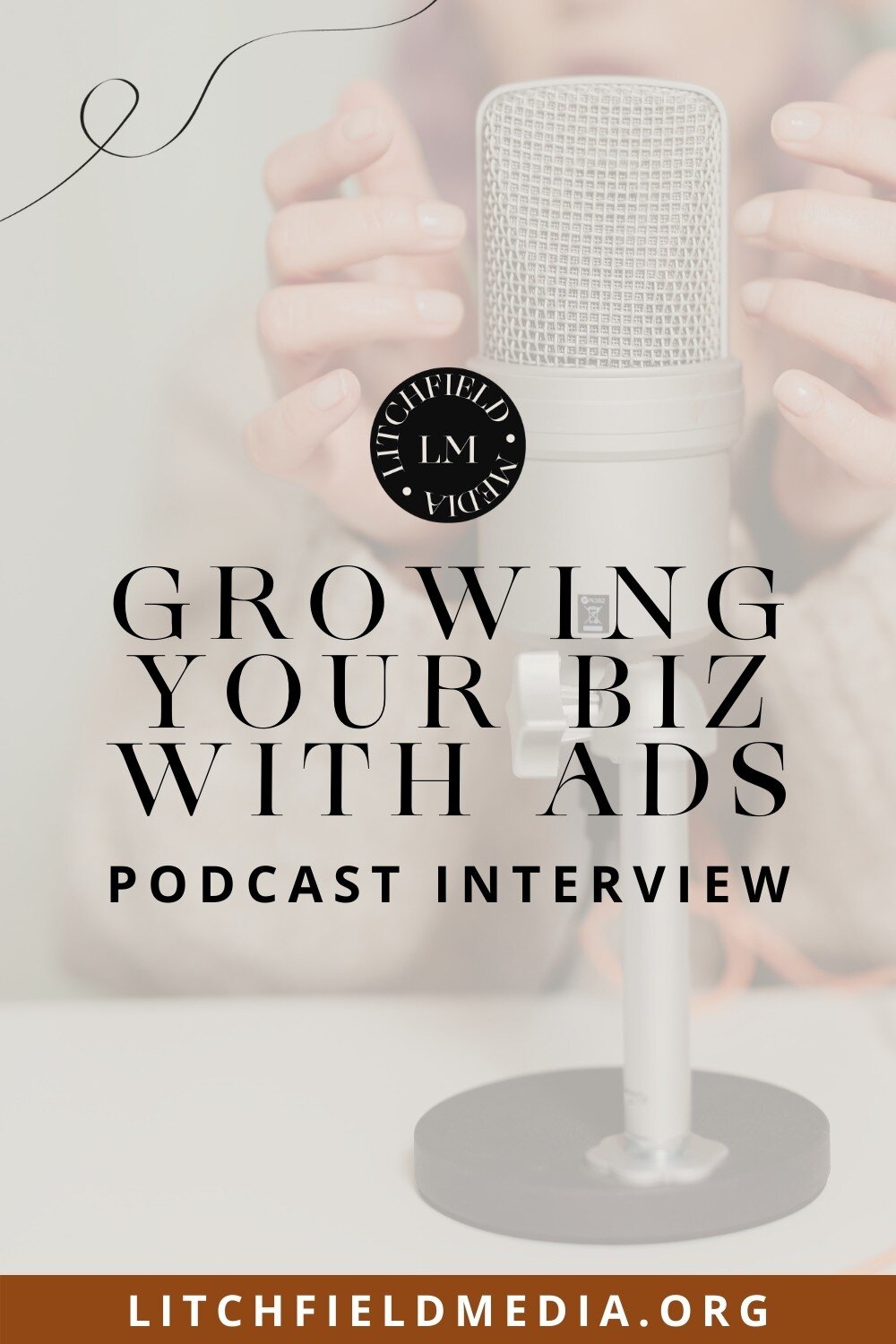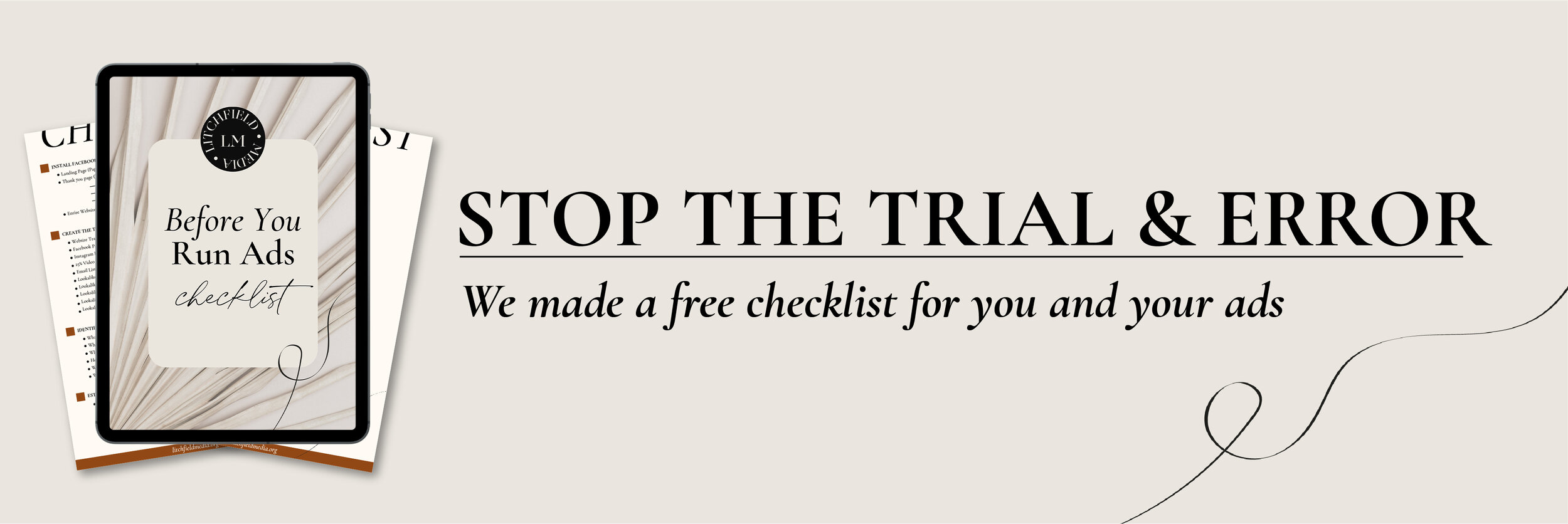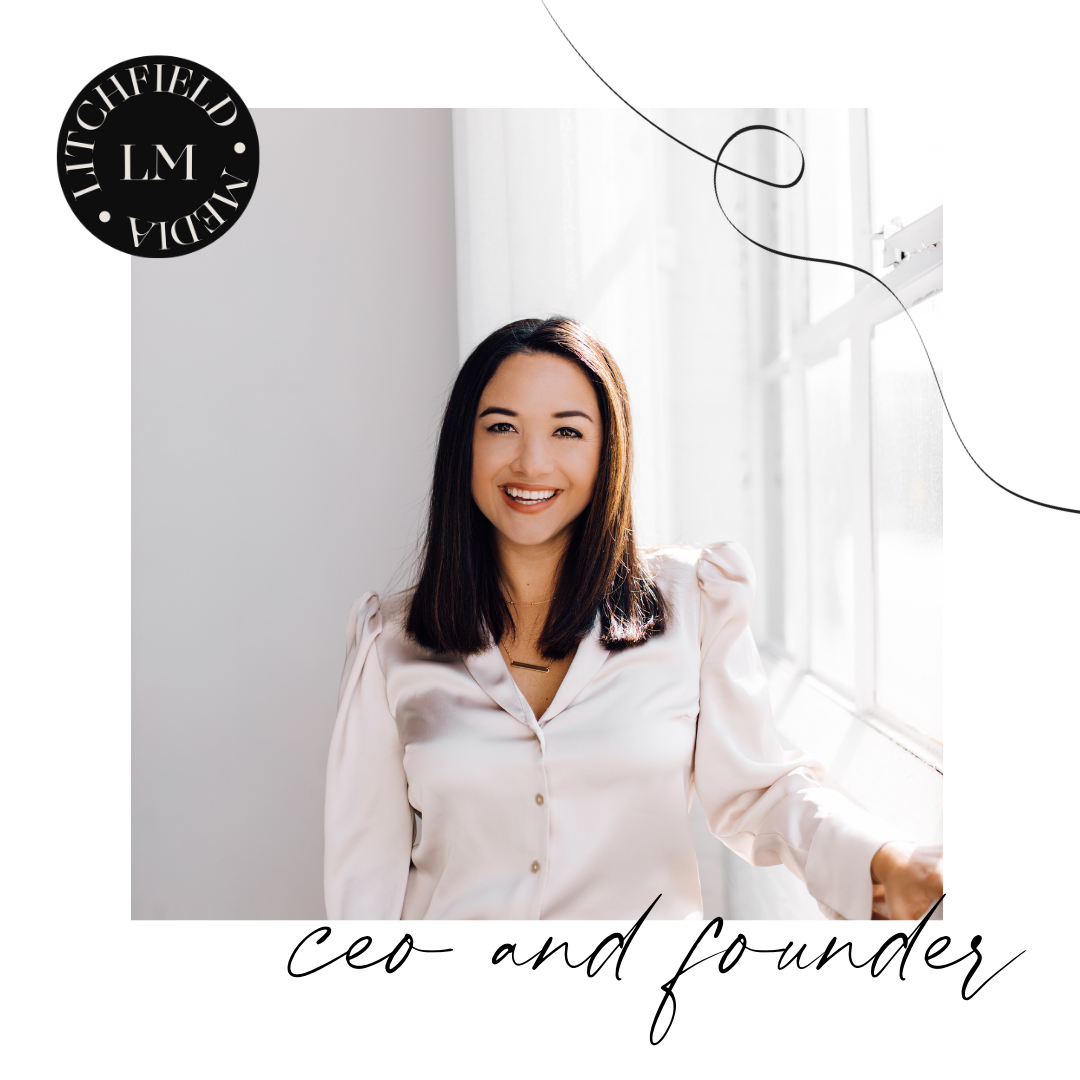Excited to share my recent podcast interview with you! I spoke with Brittney Jones from the Underestimate Me Podcast about growing your business with ads. Her podcast is for online entrepreneurs who are ready to change the way they do social media and online business to see real results. Enjoy!
Brittney Jones:
Okay. I have lots of questions about this, so I just want to dive right in. With Facebook and Instagram ads, I don’t know if this is like every entrepreneur … At the beginning, this is how I felt, the more I started to learn and even test ads on my own, I realized it was something different. But it feels like, why don’t you just create an ad and just sell your product and be done with it? But there’s more to it than that, yeah?
Melissa Litchfield:
Yes. One, you need a funnel. So a lot of the times I think people are so eager to work with a Facebook ad specialist or an ads manager. And they’re like, “Yeah, I have this course. I literally just created this. Now, I want to run traffic to it and sell it.” And then they don’t realize that, one, not everyone buys something over a hundred dollars right off the bat. Cold traffic doesn’t typically buy right away.
The second thing you need is some sort of nurture phase. So, it’s okay to utilize the freebie thing. I always recommend the Tripwire too. So, have a freebie Tripwire, like something really low ticket. It helps offset that ad spend. And then there’s going to be an email sequence that’s triggered after that. So they’re getting a series of five or six or seven or so emails where they’re really getting to know you. You’re providing value, you’re sprinkling in the testimonials, agitating the pain, the problem, all that is encompassing in your email sequence.
So, by the end of the email sequence, you really are pitching to them at the end. You’re really hard selling them. So that’s where you can literally sell your $100 to $200 product at the end of that welcome nurture email sequence.
Brittney Jones:
Okay, because it’s never like, not that it never is, but you would never recommend an ad like, “Here’s my product. Buy this.”
Melissa Litchfield:
Yes, that’s why so many people are doing masterclasses and webinars. They really need to, one, get to know you first, know that you are credible. And as a consumer, we want to know that other people have gotten success as well. We’re not going to buy something right off the bat just because we honestly believe everything you’re saying from an ad.
I’m not going to say this doesn’t work but if you want to target your warm audience and you’re launching something for the third time, feel free to target your warm audience and send them an ad. But also know that you need to be showing up on social media as well. You need to be talking about it on stories. You need to be giving them value. All those things are encompassing and I’m the type of person that I preach paid and organic. They work together harmoniously for your marketing efforts for your business.
Brittney Jones:
I love that. Can we talk about boosting posts? I know your answer to this because I follow your social media and you recently talked about this. But I know because I get this question all the time from people, should I boost an ad or boost a post. What would you say about that?
Melissa Litchfield:
Let’s talk about ads in general for a second. When you boost a post, the main objective for boosted post is for engagement. So when you’re boosting a post, that’s the objective that Facebook or Instagram is going to automatically put towards your boosted posts. So, one, that means you’re just going to get more likes and shares from people that already know you. The objective is not conversions.
If you’re looking to sell a product, I highly recommend you go into ads manager, take the money that you’re spending already on boosted posts and put that into an actual conversion ad campaign. It takes a little more thought and effort, but it’s worth it. So when you’re thinking about, “Okay, what type of ad copy do I want to put in my ad? What type of images do I want to test? What type of audiences that I’m going to target?” Utilizing that ad spend that you’re doing already, I’m sure people spend 50 bucks a week or something on boosted posts, if not more. Take that money and put it into an actual conversion ad campaign.
Brittney Jones:
I love this. So I have question about how much money to spend in ads and I’m sure this is different for each person. But what do you recommend budget wise? If you are going to maybe, A, start a funnel and then B ongoing, how much should you pump into ads for them to even be worthwhile?
Melissa Litchfield:
It really depends on your end-to-revenue goals. Say, you want to make $20,000 at the end of your launch, maybe that’s your launch goal. It really also depends on conversion rates too. Do you know your conversion rate from a webinar? Do you know how many people typically show up on your webinar? So, there are some industry standard numbers that we can talk about. The average show-up rate for a webinar is 30%, so anything 30% or higher.
So, you can always go conservative and estimate how much ad spend is going to take to hit that $20,000 revenue month. But the higher the conversion rate is, obviously, the less money you’re going to have to spend on ads. So, it kind of depends on, one, your price point of your product. Big, big thing that’s going to factor into your ad spend. Two, your conversion rate, and three, your show-up rate on your webinar. Or just if you’re running a challenge, then it really depends on how many people are actually watching your videos day to day.
Brittney Jones:
Yeah, makes sense. So is there a period of time where you need to trial your ad, like figure things out before you feel like you’ve got it clicked in place and then you just kind of pump money behind that ad that you know is working?
Melissa Litchfield:
Yeah. Typically, it takes for … Let’s just say for a lead magnet, like really simple lead gen ad campaign, 24 to 48 hours, test some things. You’ll figure out the winner, easily you’ll be able to see. The biggest common mistake that I see is people kind of lump all of their ads in one ad set and they test it against one image, one copy, one version of copy. And they’re like, “Oh, my god. My ad is not working.” And it’s really about, one, don’t put all your eggs in one basket. Two, make sure you separate your audiences in individual ad sets so you could really linear, like define. You’ll be able to look at the ad set across an ads manager and you’re like, “Oh, wow. I just spent $5 and I got nothing.”
Brittney Jones:
Okay. And is this something that you and your team could do for people? I’m hearing all this and my brain is like, “Oh, my god. There are so many moving pieces here.” Is this something you do for people?
Melissa Litchfield:
Yes. So the agency side of Litchfield Media does Done For You ads. My team will come in. You’ll start with a client kickoff call with me. We’ll go over our questionnaire. And all of those questions that literally I just kind of talked about are those things that we talked about, revenue goals, leads, targeting budget, stuff like that. We go over in our kickoff call via the questionnaire and then we really lay out like, “Okay, here’s our plan and then we can implement from there.” So within about a week, my team can get you live with your ads.
So it’s a daily thing that we’re looking at your ads or we’re optimizing it. Obviously, lead gen is a lot, I won’t say easy, but it’s less maintenance, if that makes sense. With conversion ads, it does take a lot more elbow grease because it’s a daily thing. You’re logging in. You’re looking at the ad spend. You’re looking at conversions. You’re looking at other metrics like click through rate and cost per click and cost per purchase, all those different things.
It really takes a lot more maintenance and time, so to speak. So for a business owner, it is going to be time consuming. Once you’re at that point though in your business and you can outsource it, that’s when you’re ready to scale.
Brittney Jones:
I’m sure you’ve had people say this before. I feel like … And I’ve never hired someone to fully run an ads campaign for me or anything. But I feel like I’ve wasted a lot of money in ads before and then I feel like I’ve heard people say they’ve even invested in campaign managers and felt like they’ve wasted a lot of money. At what point do you feel like from testing your ads, you should know if they work or not time-wise? Is that like a couple of months? Is that a few weeks you should start to see some indicators?
Melissa Litchfield:
That’s a good question. So, if you’re running ads to a webinar ad campaign, you really don’t know if that leads are going to convert right until after your webinar. Sometimes it does take a week or two or however long you’re promoting the webinar, the challenge, et cetera. But typically for webinars and challenges, ads will start like a week before the actual challenge or webinars starts because if you start your ads out too far in advance, people are literally going to forget to kind of show up probably.
This is fine with your organic audience, promote two weeks in advanced or however long your coach tells you. But for ads like cold traffic, people are just really not going to remember or it’s going to be harder to get them engaged and get them to join or watch the actual webinar. So yeah, it really depends. Sometimes, you literally won’t know how the results are going to be until after. But that’s where like your convert rate comes into play. If you know how much you convert with your organic audience, it will be a really good like this predictor for me and my team to really help you predict what’s going to happen with your paid launch.
Brittney Jones:
So if someone is thinking about getting started in ads, what would be the first thing that you recommend that they get in check or they start doing?
Melissa Litchfield:
Build that funnel. So the freebie page, which I have templates by the way for Kajabi and Kartra.
I found a lot of my clients or people that wanted to work with me, they just didn’t have a funnel yet. And as a consumer, I was like these templates that are already in Kajabi, ClickFunnels, Kartra, you name it, they’re also bur-like and masculine and bro marketing, that type of thing. Nothing was feminine, modern, chic, stylish. So I just was tired of tweaking things myself or buying other templates for other platforms and then having to pay someone to custom code them on my site. I use Kartra by the way, but I was like, “You know what? There’s probably a market here,” because I’m buying the templates and I’m paying extra to just get someone to build it on another platform.
But yeah, definitely start with your funnel, so like the pages first. I actually like to write the copy. Always have a thank you page, so that way you can place your pixels, your conversion pixels and track conversions there. And then the email sequence, that’s what’s going to drive the sales. The email sequence is typically 80% of your emails will drive the sales. A lot of people forget that. They’ll build a freebie. They’ll put up a simple landing page. The sequence is for follow up with everybody that opts in.
Brittney Jones:
I didn’t even really realize how much emphasis needed to be on that email sequence. And it’s funny because I even know how well email sequences do in organic marketing and I’m like I was so focused on getting the ad right and getting the Tripwire right or whatever else. And obviously, those are important, but I just forget about the email sequence.
Melissa Litchfield:
Yeah. And I mean, your Tripwire will offset your ad spend a little bit, and typically tripwires convert up like 2% to 3% but the bulk of your sales are literally going to happen in the emails.
Brittney Jones:
Okay. I love this.
Melissa Litchfield:
Obviously, the ad helps bring them in, right? So, I don’t want to discount the ads altogether, but they do carry the rest of the weight.
Brittney Jones:
Yeah, they’re like a good juice injector. That’s so good. Well, if the listeners want to get in touch, especially like I feel like those templates are gold, talking to you about ads and connecting with you, where should they go?
Melissa Litchfield:
LitchfieldMedia.org is my website. And there is a specific tab that says sales funnels. Just click on there and you can access the templates from there and then also I’m on the gram all the time, Litchfield Media on Instagram. That’s where you can find me most. You can send me a DM. I’m very open and I’ll send you a voice memo. If you have any questions, I won’t turn you away.
Brittney Jones:
Thank you so much for being here with us today and answering all my questions. And I have a feeling that you’re going to have some listeners in your DMs, which is great. And yeah, I’m just so excited for this and like, “Hey, I’m pumped. I want to go start some ads now.”
Melissa Litchfield:
Yes. Build those funnels, start the ads, do all the things.
If you want to be more confident in doing Facebook ads on your own, you need to be in the Conversion Class University, which is my Facebook Ad course.
Melissa from Litchfield Media writes about all the tips and tricks to run successful and profitable ads for your online business.



